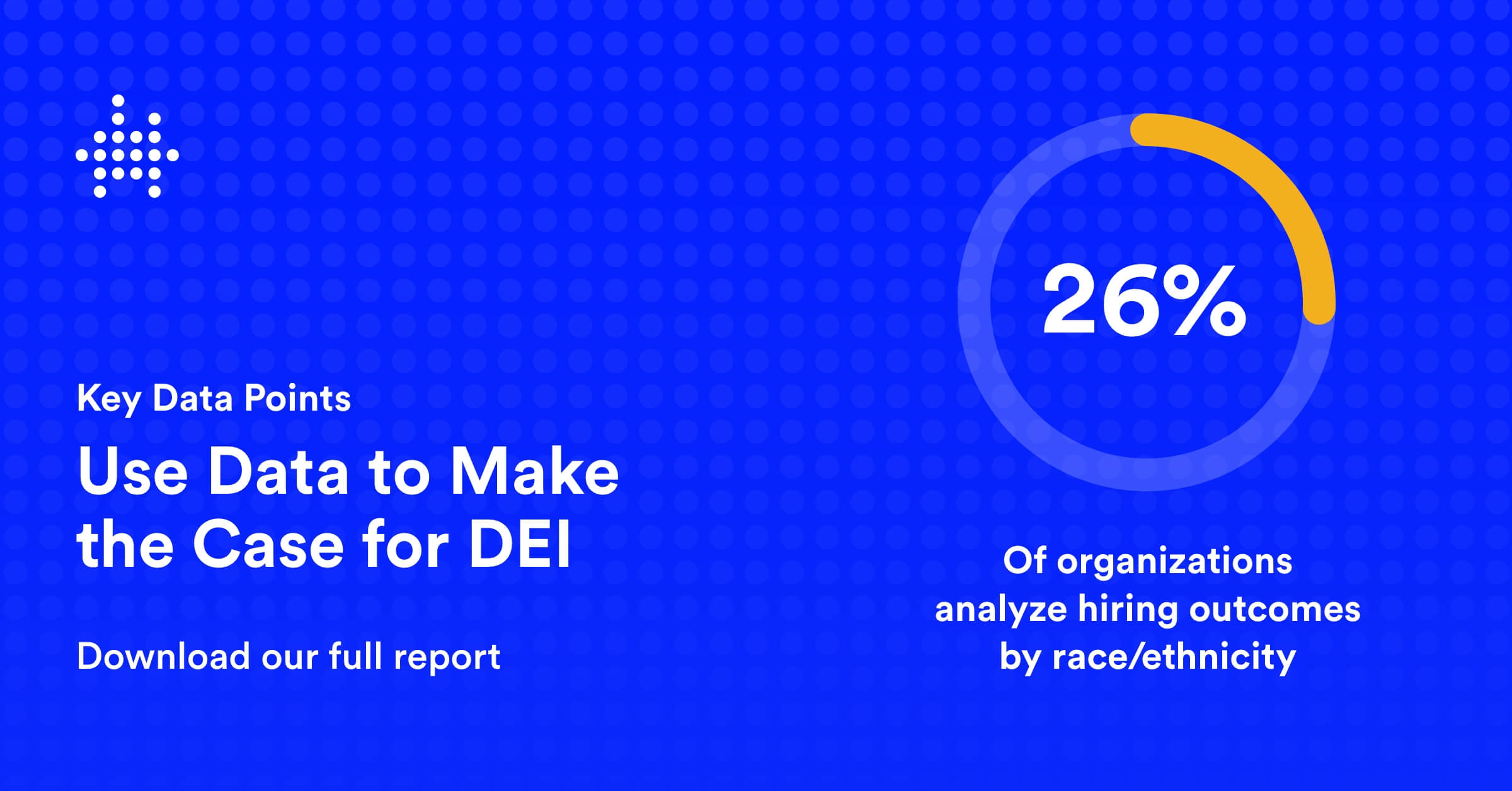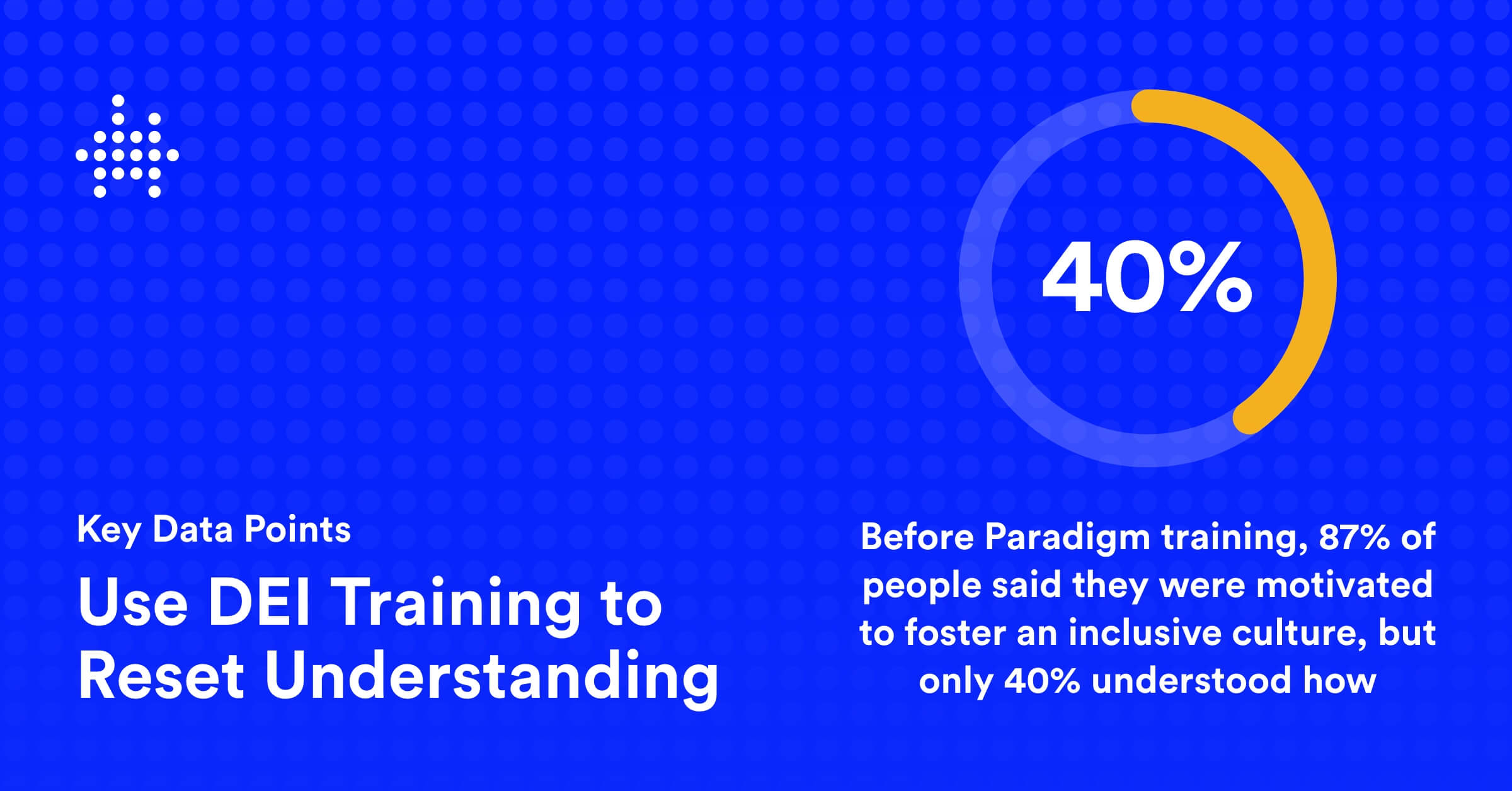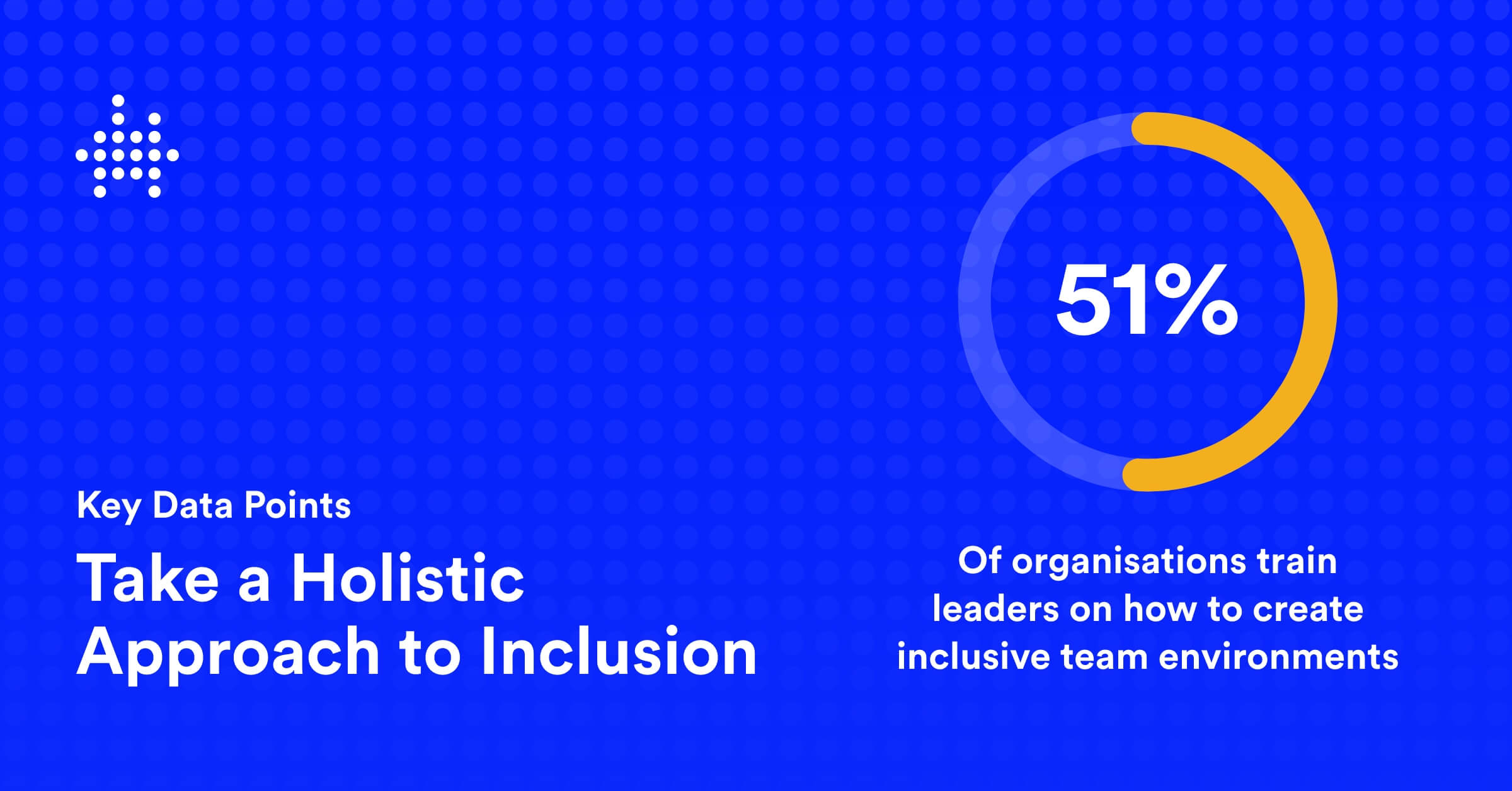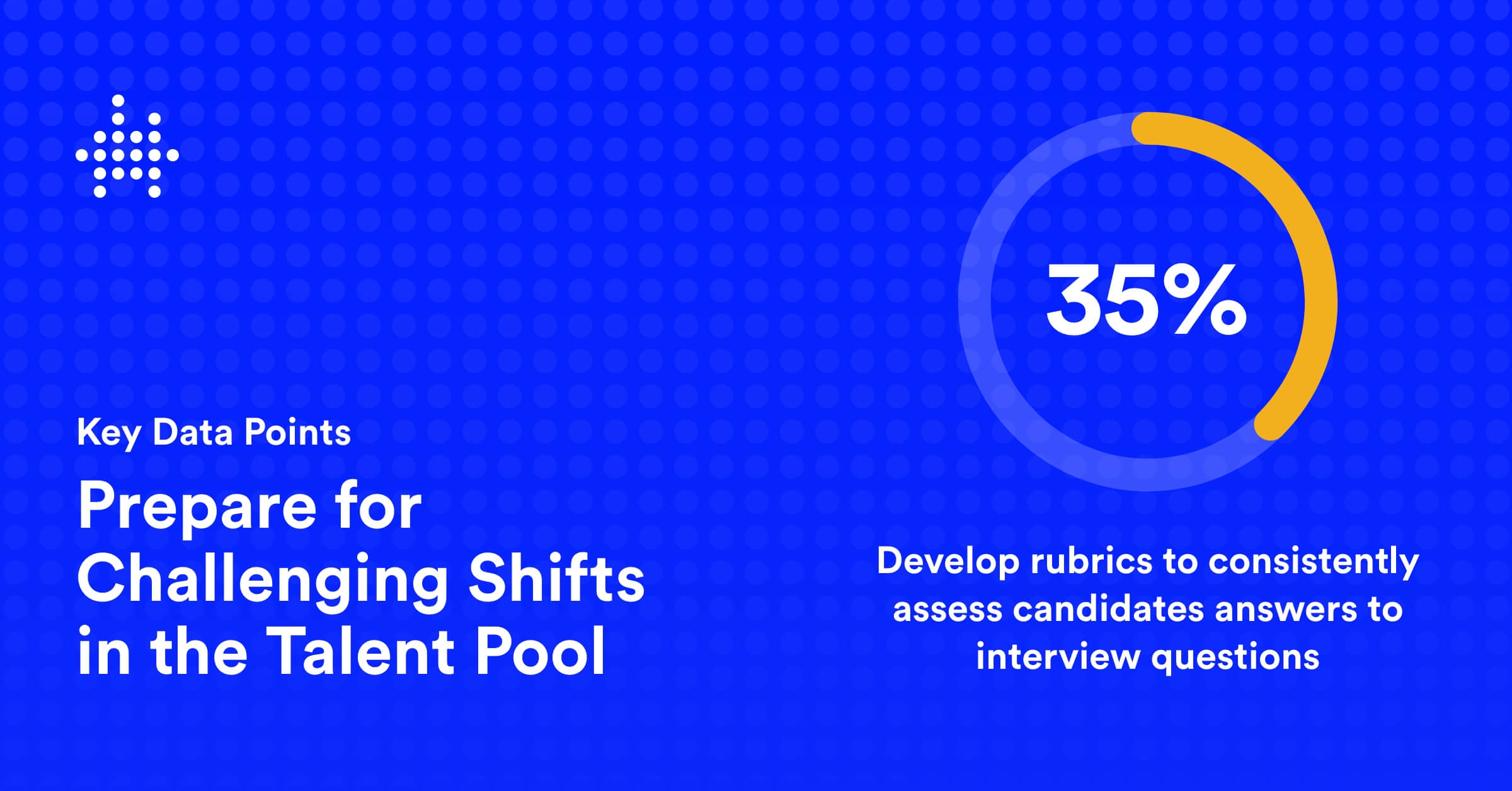New Data: 2023 DEI Trends & 2024 Opportunities
This year has been an undeniable challenge for companies and DEI consultants committed to building more diverse, equitable, and inclusive companies. The momentum fueling DEI slowed — a change driven by a combination of economic uncertainty, the increasing politicization of diversity-related topics, and fatigue — but world events with DEI-related implications did not (for example, the Israel-Hamas war and lawsuits targeting the LGBTQ+ community). Neither, of course, did employees’ expectations.
How can organizations navigate these complex dynamics, and drive DEI impact in 2024? We explored aggregated, anonymized data from our Blueprint strategy and analytics platform — representing 148 companies and hundreds of thousands of employees around the world — to understand how organizations fared in 2023 and uncover insights that can inform your 2024 efforts. After cross referencing that data with our team’s expertise, we identified four areas of focus for 2024. We have an in-depth look in our latest report The State of Data-Driven DEI: 2023 Trends and 2024 Opportunities (download here) — here a quick look at the main takeaways:
Don’t Be Afraid of DEI Data 
While recent political rhetoric and lawsuits from conservative activists have increased scrutiny around DEI goal-setting, when we compare our 2022 and 2023 data, we found companies were making progress on this front: there was an 8-point increase in organizations who had gender representation goals and a 4-point increase in organizations with race/ethnicity representation goals.
However, we pulled our 2023 data in September of this year, when the chilling effect from activist lawsuits was just setting in. In the time since, we’ve heard from a number of HR leaders who are de-emphasizing data and analytics as a part of their DEI efforts. We believe that’s the exact wrong approach. Instead, DEI data should help companies make the case for their DEI efforts: data can show marginalized groups are on the losing side of existing inequity in a company, not the beneficiaries of DEI efforts.
To be successful with that effort in 2024, organizations should focus on data that shows the outcomes of key people processes — an area where we found lots of room for improvement. For example, only 33% of organizations analyze promotion rates by race/ethnicity. Companies should also work to quantify the maturity of their DEI efforts, allowing them to report progress in a measurable way beyond just simple representation numbers and closely monitor the leading indicators of an inclusive organization — e.g., whether talent processes are structured to mitigate bias.
Use DEI Training To Reset Understanding

Given the politicization of DEI over the past year, this is a critical moment to reset the narrative, invite people into the conversation, and empower all employees to actively contribute to inclusion. DEI training can be a powerful, low-risk tool in this effort, but it needs to be effective DEI training. Our data show that while 70% of companies offer at least one kind of DEI training (unconscious bias), only 35% of companies measure the impact of training.
In 2024, we not only recommend companies focus on effective training with measurable impact, we also encourage them to invest in upskilling the employee audiences that can drive the most DEI impact: leadership and HR teams. While leaders’ impact on DEI efforts are well-established, we often see companies underinvest in upskilling their HR teams. HR needs to be empowered to navigate thorny DEI issues, champion inclusion throughout the organization, and embed DEI into key processes and practices throughout the business — training can help tremendously here.
Develop a Framework for Addressing World Events
Employees’ expectations of leaders addressing what’s happening in the world around them — for example, the Israel-Hamas war — is only increasing. In 2024, with ongoing global conflict and the 2024 U.S.Presidential election, we don’t anticipate that changing. While it’s impossible for companies to plan for every event and come up with the “right” answer, leadership teams can and should align on a framework for navigating these events that they can use to make the right decisions each time. That framework should include who will communicate, to which audiences, and how.
Focus on Inclusion

Inclusion has always been central to DEI efforts, and in 2023, many DEI leaders told us it was their biggest focus. However, our data show that fewer companies are undertaking key initiatives to measure inclusion throughout their organization, identify gaps, and take action. For example, we saw a 13-point decline in the number of companies that collect employee feedback through inclusion surveys and/or focus groups.
Next year, we not only recommend companies take the time to understand employees’ experiences of inclusion — they also need to empower and expect managers and executives to foster inclusion for their teams. There’s plenty of room for growth here — in 2023, only 51% of companies trained leaders on creating inclusive team environments.
Revamp Your Hiring Programs

While hiring may not be as big of a concern for organizations as it was two years ago, we foresee major obstacles ahead when it comes to building diverse workforces through hiring. Not only will the Supreme Court’s Affirmative Action ruling likely decrease the diversity of entry-level professionals in the U.S. Our data also show that most companies don’t have best practices in place throughout their hiring funnel to attract a diverse pool of candidates, make the hiring process inclusive, or identify differences in how candidates from different backgrounds move through their hiring process. For example, only 35% of companies use rubrics in hiring.
If companies don’t want to see the diversity of their workforce backslide in the coming years, they need to revisit their hiring processes now. We recommend focusing on ways to cast wider hiring nets, level the playing field for all candidates, and tracking data throughout the hiring funnel to understand where obstacles to diversity arise.
The above is only a sample of the insights, dozens of data points, and guidance for next year in our 2023 Trends and 2024 Opportunities report. You can download the full report here, and join me on Nov. 29 for a webinar exploring how this data can shape your 2024 strategy. I hope to see you there!
November 19, 2023

 Our website uses cookies to distinguish you from other users of our website. This helps us to provide you with a good experience when you browse our website and also allows us to
improve our site. By continuing to browse our website, you’re agreeing to our use of cookies. For more information, please read our
Our website uses cookies to distinguish you from other users of our website. This helps us to provide you with a good experience when you browse our website and also allows us to
improve our site. By continuing to browse our website, you’re agreeing to our use of cookies. For more information, please read our
